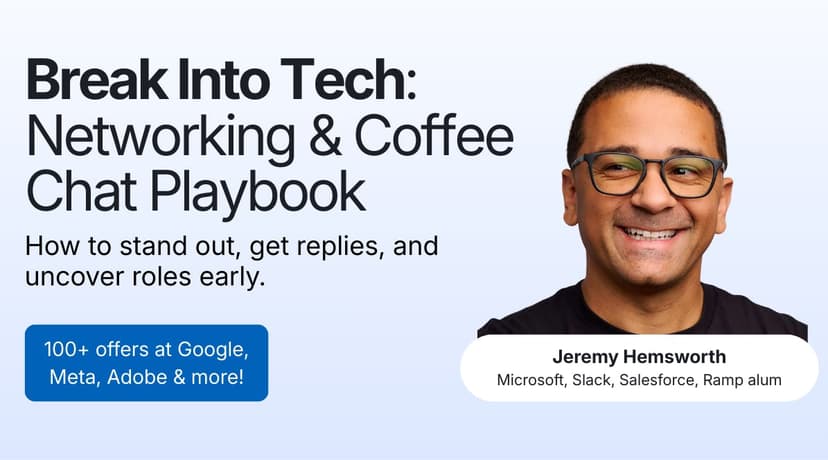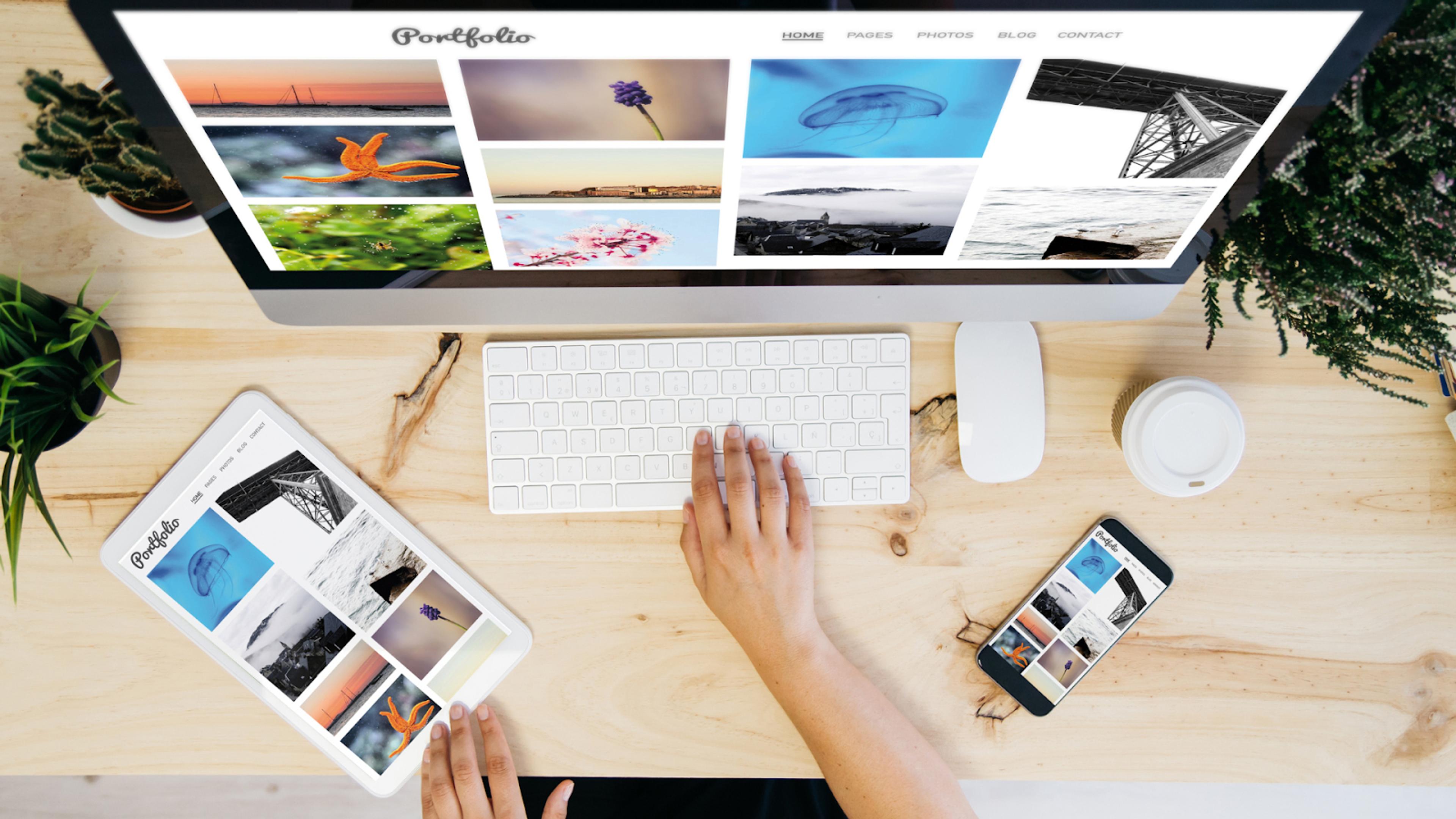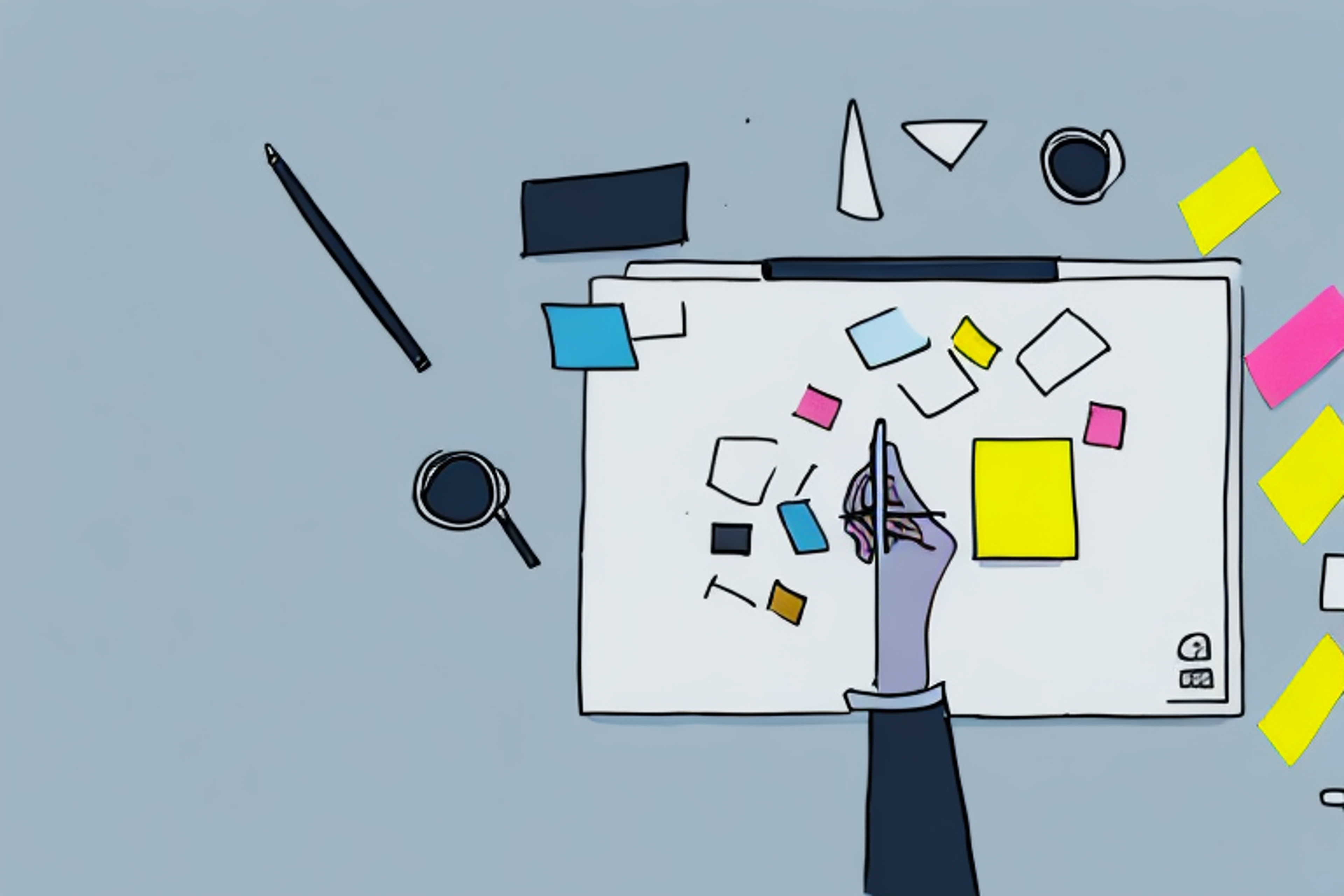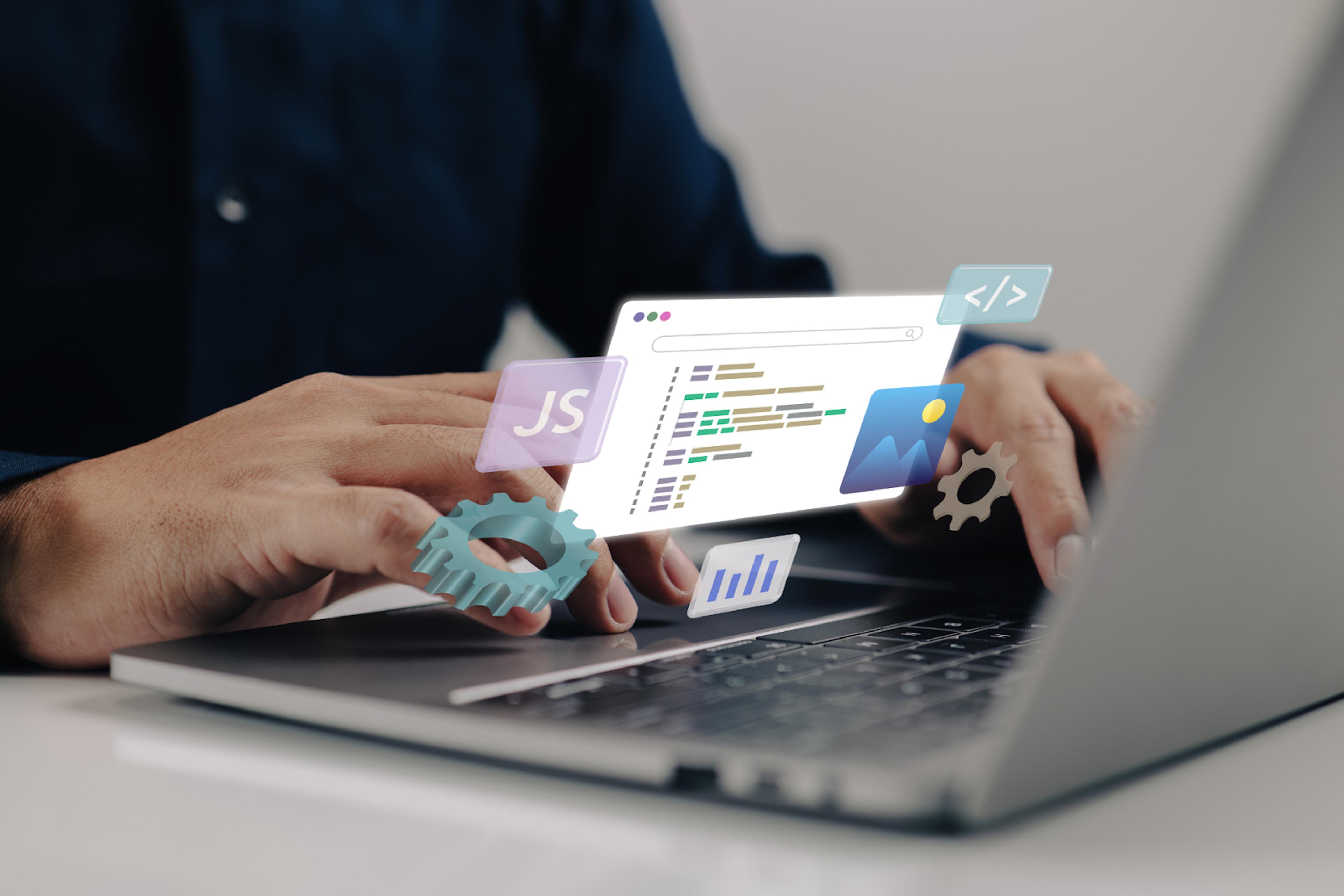Product Sense Interview: What It Is, Questions, & Tips
Master your product sense interview with real questions, expert answers, and proven frameworks. Learn what top companies look for and how to stand out.
Posted September 12, 2025

Join a free event
Learn from top coaches and industry experts in live, interactive sessions you can join for free.
Table of Contents
Product sense interviews are one of the most important and most misunderstood steps in the product management (PM) hiring process. They’re not about right answers or flashy features. They’re about how you think. More specifically, how you understand users, identify pain points, and craft innovative solutions that align with a company’s strategy and business objectives.
Whether you're prepping for a Meta product sense interview or breaking into product management at an early-stage startup, this guide will walk you through what product sense really means, how top companies structure and assess product sense interviews, and the most common (and advanced) questions to expect. We’ll walk through expert-level example answers, proven frameworks like CIRCLES, BUS, and STAR, real tips from PMs who run these interviews, and the biggest mistakes to avoid. By the end, you’ll know exactly how to approach any product sense interview with confidence, clarity, and structured thinking.
What Is Product Sense?
Let’s define product sense simply: it’s your ability to understand user needs, evaluate market dynamics, and create valuable products with strong product-market fit. Great PMs don’t just build features—they solve real problems for real people, and they do it in ways that align with business strategy and product goals.
Product sense requires:
- A deep understanding of user behavior, motivations, and pain points
- Awareness of market trends, competitive landscape, and the broader ecosystem
- The ability to prioritize features based on impact and feasibility
- Strategic thinking and thoughtful tradeoff analysis
According to several hiring managers on this Reddit thread, what differentiates candidates is not having the “correct answer,” but showing clear communication, creativity, and structured thinking.
Read: Product Sense: What it Is & How to Develop It
What Is a Product Sense Interview?
A product sense interview (also called a sense interview) evaluates how well a candidate can identify user problems and pain points, brainstorm solutions that are viable, impactful, and measurable, and align ideas with product strategy, business objectives, and user journeys
Unlike product execution interviews, which focus on how you deliver, product sense interviews focus on what and why you build. These interviews often simulate real-world scenarios, such as designing a new feature, improving an existing product, or targeting a new user segment. You'll be expected to demonstrate a deep understanding of the problem space before offering solutions.
Real-world insight: One hiring manager noted that "Candidates who jump to a feature without deeply understanding the user's pain point get dinged quickly.”
Read: Tips from an Expert: How to Prepare for Your Product Management Interview
Product Sense Interview Breakdown: What Great PMs Do at Each Stage
Most PM interviews at companies like Meta, Microsoft, Stripe, and Lyft include at least one product sense interview round. The typical format looks like this:
| Step | What Interviewers Are Evaluating | What Strong Candidates Demonstrate |
|---|---|---|
| 1. Frame the Problem | Can you clarify the objective, scope, and constraints of the prompt? Do you understand the user’s context and the company’s strategy? | Clearly define the problem space, align with business goals, and set a structured approach before jumping to solutions. Ask sharp, clarifying questions. |
| 2. Identify & Segment Users | Can you accurately identify the primary users, their goals, and differences across user segments? | Use thoughtful segmentation (e.g,. by behavior, use case, demographics) and clearly articulate user needs with examples or assumptions grounded in reality. |
| 3. Uncover Pain Points | Are you solving a real problem? Have you considered emotional, functional, and contextual user pain points? | Show empathy and depth—go beyond surface-level needs. Highlight key pain points, and tie them back to the product’s mission or value prop. |
| 4. Brainstorm Solutions | Are your ideas original, strategic, and user-centered? Can you balance innovative solutions with feasibility? | Generate a few strong ideas (not a laundry list), weigh tradeoffs, and link each back to the specific pain point. Consider market trends, constraints, and product ecosystem. |
| 5. Prioritize Features | Do you know which solution moves the needle? Can you prioritize features based on user impact, effort, and alignment with business objectives? | Use a clear framework (e.g., RICE, effort vs impact). Justify your decisions with data or assumptions, and explain why you're deferring or skipping certain features. |
| 6. Define Success & Metrics | Can you select the right product metrics to track outcomes? Do you understand what success looks like across the user journey? | Tie metrics directly to user behavior and business goals. Avoid vanity metrics. Explain how you'd measure success and iterate if needed. |
Pro Tip: Use a whiteboard, framework, or structured outline to share your thought process out loud. Many candidates miss this crucial step.
20+ Product Sense Interview Questions You Should Practice
Top product sense interview questions test more than creativity—they assess your ability to uncover user needs, prioritize tradeoffs, and align solutions with product strategy. Below are real, commonly asked questions across top tech companies, grouped by skill area.
Strategy, Market Dynamics & Business Objectives
Tests your ability to evaluate opportunity, align with company goals, and reason about the broader product ecosystem.
- How would you improve our product?
(Focus: Pain points, business impact, iteration strategy)
- If you were the PM for [Product], what would you do to grow it next?
(Focus: Growth strategy, prioritization, constraints)
- How would you decide whether to launch this product in a new market?
(Focus: Market research, sizing, localization challenges, business strategy)
- What’s a current trend that you think will impact our product strategy over the next 12–18 months?
(Focus: Awareness of market trends, emerging technologies, adaptability)
- If usage of our product suddenly dropped by 30%, how would you diagnose the problem?
(Focus: Structured thinking, root-cause analysis, product metrics)
Design, User Empathy & Pain Points
Tests your ability to understand diverse users, identify pain points, and generate solutions that resonate.
- Design a fitness app for older adults.
(Focus: User segmentation, accessibility, behavioral insight)
- How would you improve the onboarding experience for our product?
(Focus: User journeys, friction points, experimentation mindset)
- Describe a product you think is poorly designed. How would you improve it?
(Focus: Critical thinking, feedback depth, product intuition)
- Redesign Facebook Events for international users.
(Focus: Global user needs, localization, edge cases)
- How would you design a product to reduce food waste for households?
(Focus: Mission-driven thinking, user behavior, system constraints)
- What would you build for college students who just moved to a new city?
(Focus: Needs discovery, community-building, user empathy)
Prioritization, Metrics & Tradeoffs
Tests your ability to make decisions under uncertainty and measure what matters.
- What product metrics would you track to measure the success of a new feature?
(Focus: Defining success, actionable metrics, product intuition)
- How would you prioritize features based on customer feedback and engineering constraints?
(Focus: Decision making, stakeholder alignment, prioritization frameworks)
- How do you decide whether to sunset a feature?
(Focus: Strategic thinking, opportunity cost, product lifecycle)
- You have two weeks to build a feature with your team. How do you decide what to build?
(Focus: Constraints, MVP mindset, product strategy)
Behavioral, Product Thinking & Real-Life Application
Tests your real-world PM experience, how you apply product sense on the job, and how you learn from failure.
- Tell me about a product you love. What makes it great, and how would you make it better?
(Focus: Product taste, product improvement, UX detail)
- Describe a time you had to choose between two competing stakeholder requests. How did you decide?
(Focus: Communication, prioritization, business objectives)
- How did you design for a user who’s not like you?
(Focus: Bias mitigation, user research, inclusive design)
- Describe a product decision you made that didn’t go as planned. What did you learn?
(Focus: Reflection, accountability, data-driven iteration)
- How have you used user research to uncover an unexpected pain point?
(Focus: Research methods, insight generation, customer-centricity)
Pro Tip: Don’t just memorize answers. Practice structuring your thought process, articulating tradeoffs, and justifying your decisions with logic—not just intuition. Interviewers are looking for clarity, product judgment, and creativity under constraints.
Real Example Answers from Successful Candidates
These answers go beyond buzzwords and show how great PMs think: grounded in user empathy, structured reasoning, and measurable impact.
Q: How would you improve our product?
“Before proposing improvements, I’d start by reviewing user data to identify friction points—especially in activation and retention. One key drop-off appears to be during onboarding, where users are required to complete a multi-step setup before reaching value. I’d suggest introducing progressive onboarding: allow users to get value first, then guide them to complete setup incrementally. I’d also test contextual tooltips based on usage patterns, which we've successfully implemented in a previous product I owned—leading to a 15% lift in 7-day retention. The goal isn’t just speed, but helping users hit their first ‘aha moment’ faster.”
Highlights:
- Strategic diagnosis using product metrics
- User-centered onboarding improvements
- Clear product goals (activation, retention, engagement)
- Relevant real-world example + outcome
- Deep understanding of behavior-driven product design
Q: How would you design a product for college students?
“I’d start by segmenting the audience: first-years in dorms, off-campus students, and international students have very different needs. I’d prioritize discovery through mixed-method research—quantitative surveys for scale and qualitative interviews for depth. A key pain point across segments might be time fragmentation: students juggle academics, work, and social life, often without structured support. Based on this, I’d explore building a lightweight planning assistant that integrates with campus calendars and messaging tools—essentially a context-aware day planner that helps them time-block around fixed commitments. We’d test initial adoption through student orgs and early adopters on campus.”
Highlights:
- Strong user segmentation + prioritization
- Research plan (quant + qual)
- Identifies real, user-validated pain point
- Product idea ties to behavioral insight, not assumption
- Thoughtful GTM (go-to-market) strategy
Q: What metrics would you track to measure the success of a new feature?
“First, I’d clarify the feature’s objective—whether it’s improving retention, increasing engagement, driving revenue, or reducing friction. For example, let’s say we launched a new ‘Save for Later’ feature in an e-commerce app aimed at boosting user engagement and reducing cart abandonment. I’d define success through a mix of leading and lagging indicators. Leading metrics might include feature adoption rate (percentage of users who save items), revisit rate (how often users return to saved items), and session length post-save. Lagging metrics would include conversion rate uplift and changes in repeat purchase behavior. I’d also segment these metrics by user type—new vs. returning—to ensure we’re not over-indexing on power users. To validate causality, I’d propose an A/B test with instrumented funnels for attribution.”
Highlights:
- Begins with clear business objectives
- Differentiates between leading and lagging metrics
- Demonstrates understanding of user behavior and segmentation
- Brings in experimentation (A/B testing) and structured thinking
- Avoids vanity metrics—focuses on impact
What separates strong candidates? They don’t jump straight to solutions. They anchor every answer in user needs, business context, and product constraints. And they clearly explain the why behind their choices.
Proven Frameworks to Structure Your Product Sense Interview
Hiring managers don’t expect perfect answers—but they do expect structured thinking. The best PM candidates approach product sense interviews with clarity, focus, and a repeatable process for navigating ambiguity. Here are three industry-standard frameworks that top performers use—and how to apply them effectively in different types of questions.
CIRCLES Method
Developed by Lewis Lin, the CIRCLES Method is a go-to structure for tackling product design, ideation, and “new feature” interview questions. It helps candidates avoid jumping to solutions and instead guides the conversation with intention.
Start by comprehending the situation—what’s the goal of the product or feature in question? Next, identify the customer and get specific about their behaviors, needs, and context. Then, report the customer’s needs clearly, focusing on pain points rather than surface-level wants. From there, cut through prioritization by identifying what matters most. Only then do you list solutions, using creative but feasible ideas that address the right problems. Afterward, evaluate tradeoffs across impact, effort, and risk. Finally, summarize your recommendation, anchoring it to user needs and business value.
This method shines when you need to demonstrate end-to-end product thinking, from understanding the user to shaping a strategic roadmap.
CIRCLES Method Example:
Interview Question: "Design a product to help travelers feel safer when arriving in a new city."
Comprehend the Situation - The goal is to reduce anxiety and increase safety for travelers when they arrive in unfamiliar cities, especially at night or in non-native language contexts.
Identify the Customer - The primary users are solo travelers, especially women or international tourists unfamiliar with local customs or transportation.
Report the Customer’s Needs - They want to feel secure during the first 30–60 minutes after arrival—navigating from airport to lodging, avoiding scams, and finding verified transportation.
Cut Through Prioritization - The most urgent needs are safe, verified ground transportation and location awareness (e.g., knowing if they’re being taken off-route).
List Solutions - Ideas include:
- A "trusted arrival mode" in existing travel apps (like Google Maps or Uber)
- Real-time location sharing with friends or hotel concierge
- A “local customs cheat sheet” triggered by location
Evaluate Tradeoffs - Real-time tracking adds privacy considerations. Partnering with local authorities could increase credibility but slow rollout. The MVP may just be verified transit and auto-alerts when a deviation is detected.
Summarize Your Recommendation - Build a lightweight safety mode into an existing app (starting with Uber or Maps), offering verified transit, shareable ETA, and auto-alerts. Test in major global hubs first, then expand regionally.
BUS Framework
The BUS Framework is one of the most effective ways to approach product improvement, product sense, or “what would you do next?” questions. It stands for Business Objectives, User Problems, and Solutions.
Start by aligning on business goals—what are we trying to achieve, and why now? Then shift to the user lens: what’s holding them back, what’s causing friction, and what are their unmet needs? Only once you’ve grounded the problem in both strategic and user context do you propose solutions. This sequencing ensures you’re not solving the wrong problem, and it forces you to balance product creativity with commercial awareness.
Top PMs use the BUS Framework to keep answers grounded in value creation, not just feature ideas.
BUS Framework Example:
Interview Question: "What would you improve about the onboarding experience for our mobile banking app?"
Business Objectives - Increase activation rate and improve 7-day retention. Many users install the app but fail to complete the setup or fund their account.
User Problems - Users feel overwhelmed by the required KYC (know your customer) steps, and the value of the app isn’t immediately clear. There’s no “aha moment” until after several steps.
Solutions:
- Reorder onboarding to highlight key benefits first (e.g., cashback or free transfers)
- Use progressive disclosure: gather required info in steps, not all at once
- Add smart autofill integrations to reduce friction
- A/B test welcome flows with one-click sign-up + delayed verification
The BUS framework ensures the improvement is aligned with business impact (activation), grounded in a real user friction point, and ends with actionable product solutions.
STAR Method
Used primarily for behavioral and experiential interview questions, the STAR Method helps you deliver concise, impact-oriented stories. When asked to describe a tradeoff, a difficult decision, or a cross-functional challenge, this framework keeps your answer focused and persuasive.
Begin by outlining the situation—the company, product, or problem you were facing. Then explain your task, or what you were responsible for. In the action phase, walk through the steps you took, including how you handled ambiguity, stakeholders, or resource constraints. End with the result, tying your actions to clear outcomes (ideally with metrics), and share what you learned or how you’d approach it differently next time.
Interviewers aren’t just listening for what happened—they’re assessing your decision-making, communication, and leadership under pressure. STAR helps you show it all clearly and efficiently.
STAR Method Example:
Interview Question: "Tell me about a time you had to prioritize one feature over another with limited resources."
Situation - At a fintech startup, we had two major feature requests in Q3: a savings goals feature and real-time payment notifications.
Task - As the PM, I had to decide which to build with our limited engineering capacity—both had support, but we couldn’t deliver both in time for our next release.
Action - I ran user interviews and reviewed support tickets. The data showed that 60% of churned users had mentioned missed payment alerts as a reason for dissatisfaction. Savings goals, while desirable, were less urgent. I aligned stakeholders on the data and ran a quick feasibility check with engineering.
Result - We prioritized the real-time notifications. After launch, daily active users increased by 25% and support tickets on payment visibility dropped by 40%. We shipped savings goals the next quarter with more insight into user preferences.
This STAR response is tight, impact-driven, and shows data-backed prioritization—exactly what interviewers are listening for.
Mistakes to Avoid in Product Sense Interviews
Interviewers from Meta and Stripe consistently flag these common pitfalls:
- Jumping straight to features without defining the problem
- Failing to segment users or understand user behavior
- Listing “nice to have” features without prioritizing
- Giving surface-level answers with no metrics to measure success
- Relying on your own experience instead of user research
Remember: You’re being evaluated on your ability to think like a PM, not a user.
How to Prepare Like a Pro
Practice Mock Interviews Like a Real PM
Top candidates don’t just rehearse answers but also simulate the real thing. Practicing out loud forces you to clarify your thinking, spot fuzzy logic, and refine your communication. Focus especially on structuring your thought process under pressure. For even faster progress, work with a seasoned product management coach who can give you targeted, honest feedback based on your blind spots, not just general tips.
Ready to sharpen your skills? Book a mock interview with a PM coach here.
[top pm coaches]
Understand the Company’s Product Strategy
Every great product sense answer is tailored. That starts with knowing the company’s mission, product portfolio, and customer base. Look for what success means to them, whether that’s engagement, growth, retention, or ecosystem expansion, and map your answers to those priorities. Study recent launches, read their product blog or engineering posts, and be ready to talk about how you’d fit into their product direction. Tailored responses = standout candidate.
Analyze Real Product Sense Examples
You don’t need to memorize answers; you need to learn how great PMs think. Study top-performing responses to real interview questions. Focus on how they structure their answers, how they prioritize features, and how they tie every decision back to user needs and business objectives. Treat each example as a reverse-engineering opportunity.
Build a Resume That Reflects How You Think
Your resume should already show product sense. That means emphasizing outcomes, not just responsibilities. Focus on how you identified user problems, drove decisions, launched features, and measured success. Use metrics where possible. If you’re early in your PM career, highlight transferable skills, like structured thinking, strategic communication, and cross-functional collaboration.
Want a standout PM resume? Check out our product management resume guide!
Companies Known for Product Sense Interview Rounds
Product sense interviews are a core component of PM hiring at top tech companies—but each one evaluates it through a slightly different lens. Understanding how each company defines "great product thinking" can help you tailor your approach and outperform other candidates.
Meta
Meta popularized the modern product sense interview, and many companies still borrow from its playbook. These interviews are structured to evaluate your product vision, user empathy, and prioritization under ambiguity. You’ll often be asked to design or improve a product for a broad user group, to uncover meaningful user needs and identify the right tradeoffs. Meta places a strong emphasis on whether your solution aligns with their mission to "build community and bring the world closer together"—so mission-fit and long-term thinking matter.
Read: How to Get Into the Meta RPM Program (2025)
Microsoft
Microsoft’s product sense rounds are designed to test structured thinking and product logic at scale. Expect questions that explore platform-level tradeoffs, accessibility, and global user segmentation. Strong candidates excel by breaking down complex, multi-stakeholder problems with precision and tying their decisions to business strategy and technical feasibility. Clarity of reasoning and strong written communication are highly valued here.
Read: Microsoft Product Manager: Interview Process, Salary, & Responsibilities
Stripe
Stripe’s process dives deep into business models, monetization levers, and product ecosystems. You’ll be tested on your ability to evaluate new opportunities, reason about tradeoffs in a highly regulated industry, and prioritize features that move real metrics. Successful candidates demonstrate fluency in financial infrastructure, a deep understanding of user journeys, and the ability to balance developer experience with business outcomes.
Lyft, Apollo, Affirm
These companies emphasize user-centered thinking, creativity under constraints, and strong communication of product tradeoffs. You’re expected to show how you identify pain points in specific user segments and how you’d prioritize solutions in a fast-paced, resource-constrained environment. What stands out most here is the candidate’s ability to navigate ambiguity, craft compelling narratives, and back up their product decisions with logic, not gut feeling.
Pro tip: Before any product sense interview, read the company’s product blog, press releases, and user feedback forums. Then tailor your responses to reflect their product principles, user base, and market context.
Read: How to Get Into the Lyft APM Program
Final Tips to Stand Out
- Approach it like a real product manager would: with structured thinking and curiosity
- Be confident in your own answers, even if they’re unconventional
- Look for emerging technologies or trends to support your ideas
- Always measure success and show your thinking with product metrics
- Show your excitement. Enjoy the conversation.
Conclusion: You Don’t Need the “Perfect Answer”, You Need the Right Mindset
Acing your product sense interview isn’t about having all the answers. It’s about showing you can think strategically, define product sense clearly, empathize with users, and craft solutions grounded in business and user value.
Keep practicing. Ask for honest feedback. And when in doubt, go back to the basics: Who are you building for? What problem are you solving? Why now?
For personalized coaching to prep for your upcoming PM interviews, browse vetted PM coaches and get started today. Also, check out our free events and group classes for more strategic PM insights.
Read these next:
- Data Product Manager Interviews: Questions & Tips
- Product Design Interview: What It Is, Questions, & Tips
- How to Nail the Atlassian APM Interview
- How to Ace Your Capital One Product Manager Interview
- The North Star Framework: How to Define and Achieve Product Success
- How to Write a Powerful Product Management Cover Letter
- 20 Common System Design Interview Questions (With Sample Answers)
FAQs about Product Sense
What do interviewers actually look for in a product sense interview?
- They want to see how you think, not just what you say. That means identifying real user pain points, being strategic about solutions, and explaining your thought process clearly.
How do I answer product sense questions if I don’t know the industry well?
- Start by asking clarifying questions and making reasonable assumptions about the users and business. Interviewers care more about your reasoning and structure than deep domain knowledge.
What’s the difference between a product sense and a product execution interview?
- Product sense is about what you should build and why. Execution is about how you deliver results, prioritize, and track success once the feature is live.
How do I avoid jumping straight to solutions in these interviews?
- Use a framework like CIRCLES or BUS to guide your thinking. Always define the user and their problem before brainstorming features.
Browse hundreds of expert coaches
Leland coaches have helped thousands of people achieve their goals. A dedicated mentor can make all the difference.


























